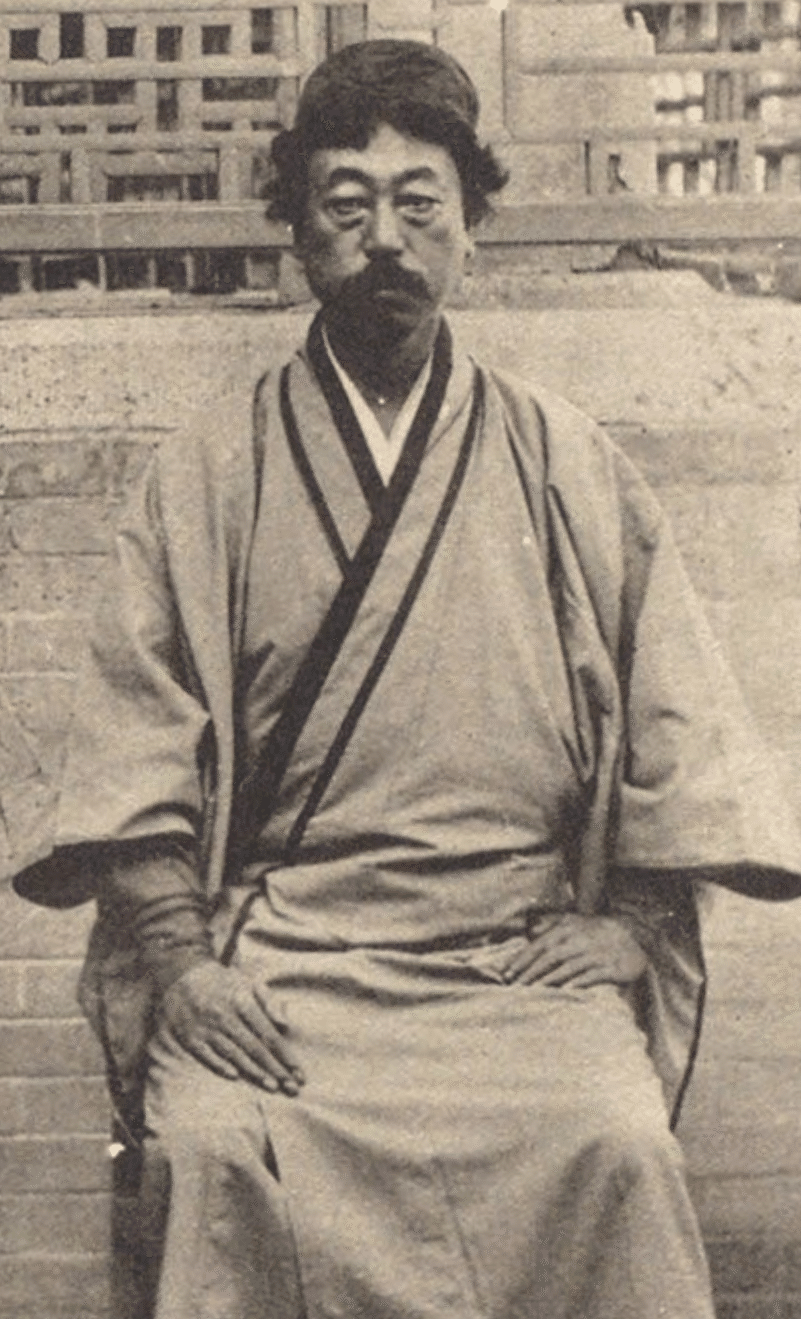
日本人の英語 岡倉天心
明治時代には英語で「吾輩は猫である」を執筆した夏目漱石を始め、なぜか英語の大家が数多いた。
その中のひとりに岡倉天心がいる。
ここにその痛快な逸話を紹介する。
岡倉天心に関する逸話、特に彼が渡米した際のエピソードは非常に興味深いものがあります。以下にいくつかの逸話を紹介します。
ボストンでの差別発言への切り返し: 明治36年(1903年)、岡倉天心はアメリカのボストン美術館からの招聘を受け、弟子の横山大観や菱田春草と共に渡米しました。ある日、彼らが和装でボストンの街を歩いていると、一人の若者から「おまえたちは何ニーズ? チャイニーズ? ジャパニーズ? それともジャワニーズ?」と侮蔑的な言葉を投げかけられました。岡倉はこれに対し、「我々は日本の紳士だ。ところで、あなたは何キーか? ヤンキーか、ドンキーか、モンキーか?」と陽気に返答しました。この機知に富んだ返しは、彼の英語力とユーモアを示す逸話として広く知られています。

『茶の本』の執筆: 渡米中、岡倉は英語で『The Book of Tea』(茶の本)を執筆しました。この著作は、日本の茶道や文化を西洋に紹介する重要な作品となり、彼の英語力と文化的な視野を示すものです。彼はこの本を通じて、日本の美術や哲学を世界に発信しました。
アメリカでの日本美術の普及: 岡倉はボストン美術館での活動を通じて、日本美術の価値を広めるために尽力しました。彼はアメリカの美術界において、日本の伝統的な美術を再評価させる役割を果たし、後の日本美術の国際的な評価に大きく貢献しました。
これらの逸話は、岡倉天心が明治時代においてどのように日本文化を世界に広め、また彼自身の英語力がその活動にどのように寄与したかを示しています。彼のユーモアや知恵は、当時の国際的な交流において重要な役割を果たしました。
英訳↓↓↓
Here are some anecdotes about Okakura Tenshin, particularly during his time in the United States:
Response to a Discriminatory Remark in Boston: In 1903, Okakura Tenshin was invited to the Boston Museum of Fine Arts and traveled to the U.S. with his disciples, Yokoyama Taikan and Hishida Shunso. One day, while they were walking through the streets of Boston in traditional Japanese attire, a young man shouted at them, "What are you, Chinese? Japanese? Or Javanese?" Okakura cleverly replied, "We are gentlemen from Japan. By the way, what are you? A Yankee, a donkey, or a monkey?" This witty comeback is well-known as a testament to his English skills and sense of humor.
Writing "The Book of Tea": While in the U.S., Okakura wrote "The Book of Tea" in English. This work became an important piece that introduced Japanese tea culture and philosophy to the West. Through this book, he showcased his English proficiency and cultural perspective, helping to bridge the gap between Eastern and Western thought.
Promoting Japanese Art in America: Okakura worked tirelessly to promote the value of Japanese art through his activities at the Boston Museum of Fine Arts. He played a significant role in encouraging the American art community to reevaluate traditional Japanese art, contributing greatly to the international recognition of Japanese art in the years that followed.
These anecdotes illustrate how Okakura Tenshin helped spread Japanese culture to the world during the Meiji era and how his English skills contributed to his efforts. His humor and wisdom played a crucial role in fostering international exchange at that time.
日本人は英語が苦手であると定評ですが、これらの明治の有識者たちは、英語で議論しても決して負けない、そういう偉人が沢山輩出されています。
何故?
私見ですが漢文だと思います。漢文は英語に構文が似ています。
英語以上に漢文は必須科目だった。その後に英語学習が入ってきた。
なので、漢文の要領で頭にスイスイ入ってきた。
現代は漢文はあまり力を入れていない。
現在の英語学習方法として、まずこの構文の違いを頭に叩き込むところから始める事をお勧めします。
例えば
日本語: 私の名前は中野です。
英語: My name is Nakano.
中国語: 我的名字是中野。
一目了然ですね😆
日本語は
主語(私の名前は)+補語(中野)+動詞(です)
英語と中国語は
英語: 主語(My name)+動詞(is) +補語(Nakano)
中国語: 主語(我的名字)+動詞(是)+補語(中野)
ですから英語学習のスタートは
文章構文の違いなどの簡単な文法と発音の違いから始めることをお勧めします。
大雑把で良いと思います。
小さなお子様たちは耳と口が大人と違いますからどんどん理屈抜きで英語環境を作って行けば良いと思います。😊
